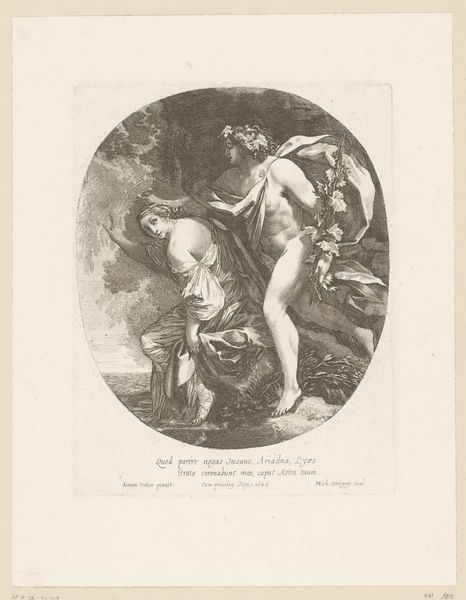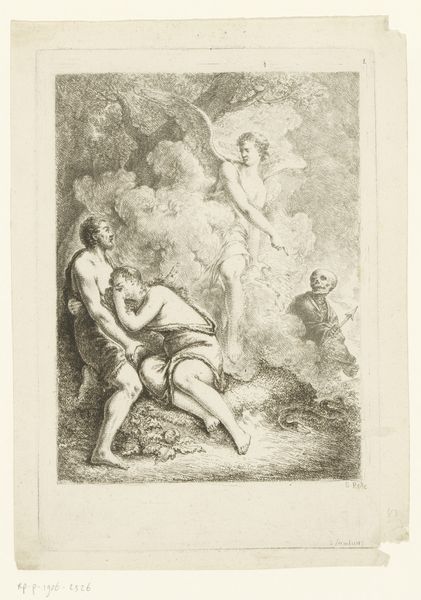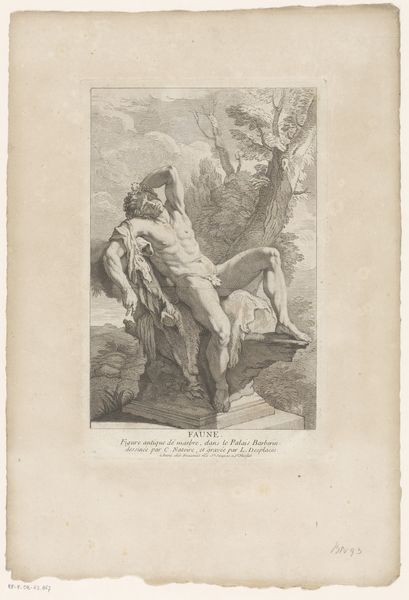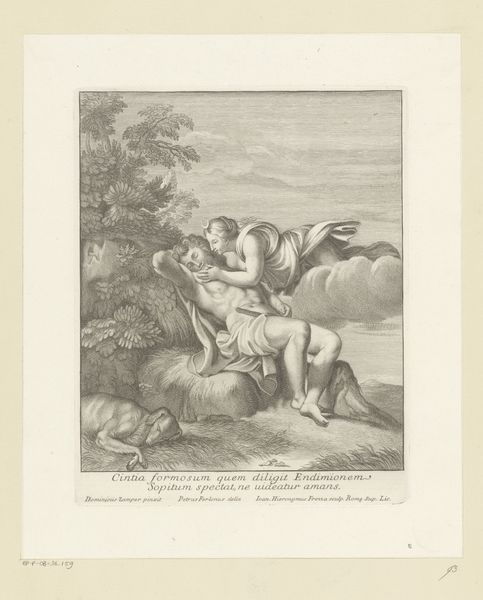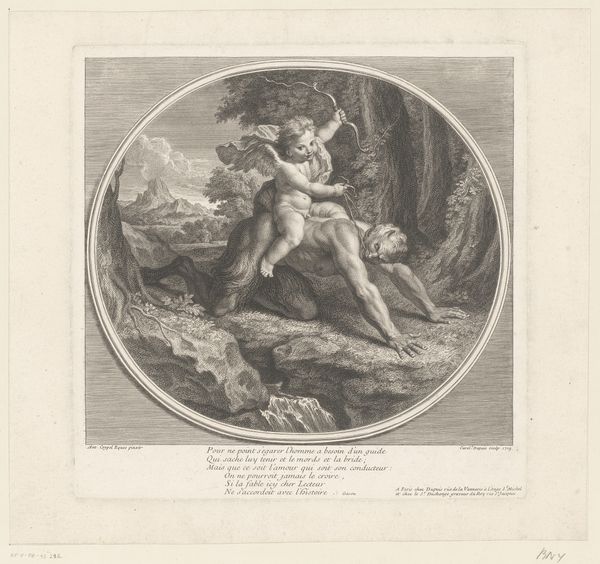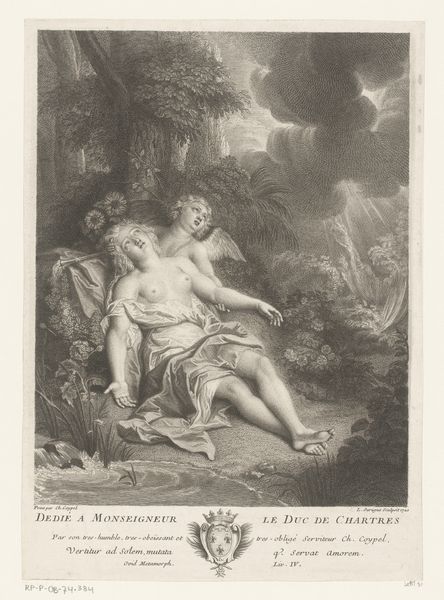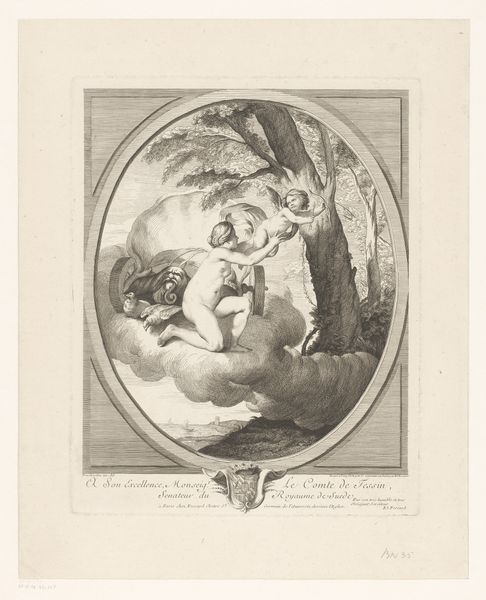
print, engraving
#
allegory
# print
#
figuration
#
nude
#
engraving
#
rococo
Dimensions: 314 mm (height) x 239 mm (width) (plademål)
Mlle Contad’s “Venus og Amor” is an intriguing example of 18th-century printmaking, a medium then at the intersection of fine art and commercial reproduction. The artwork is an etching, a printmaking process relying on the corrosive properties of acid to create an image on a metal plate. The artist would have painstakingly coated a copper plate with a waxy, acid-resistant substance, then scratched an image into the wax, exposing the metal beneath. The plate was then immersed in acid, which bit into the exposed lines. The resulting grooves hold ink, which is then transferred to paper under high pressure. This process allowed for the relatively efficient creation of multiple images, serving a growing market for visual culture. The fine, delicate lines and tonal variations, so carefully rendered here, speak to the engraver’s skill. The print becomes a commodity, circulating images of beauty and classical themes for a wider audience. Recognizing the labor, skill, and context of production enriches our understanding and challenges the traditional art historical hierarchy.
Comments
No comments
Be the first to comment and join the conversation on the ultimate creative platform.
